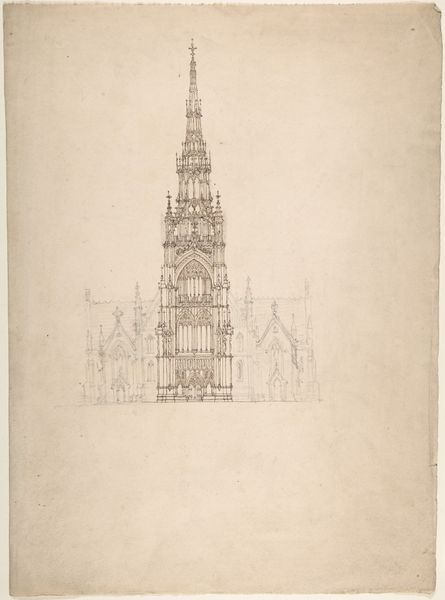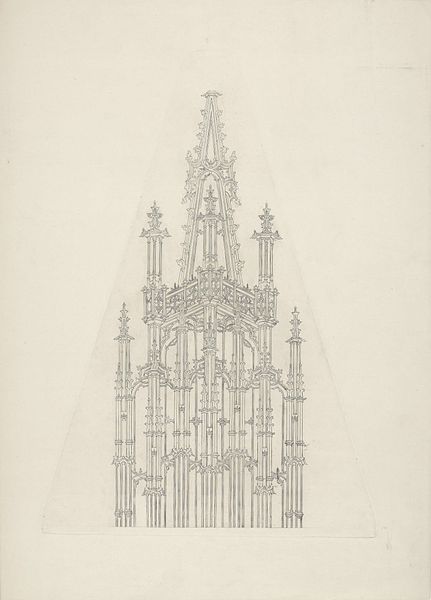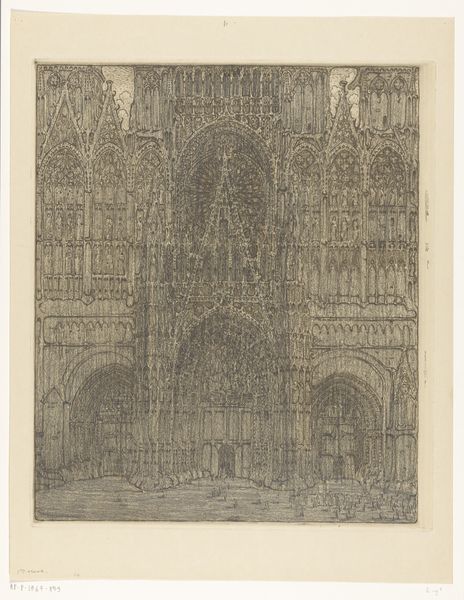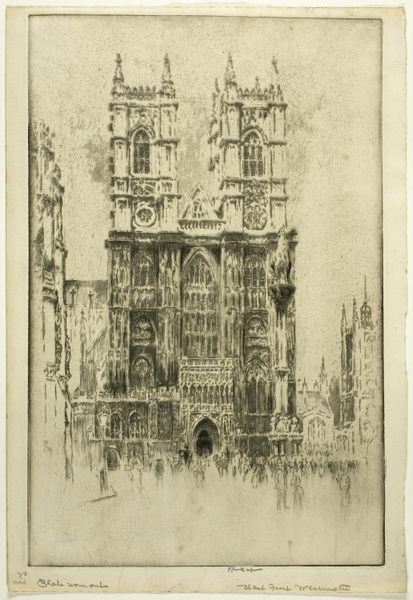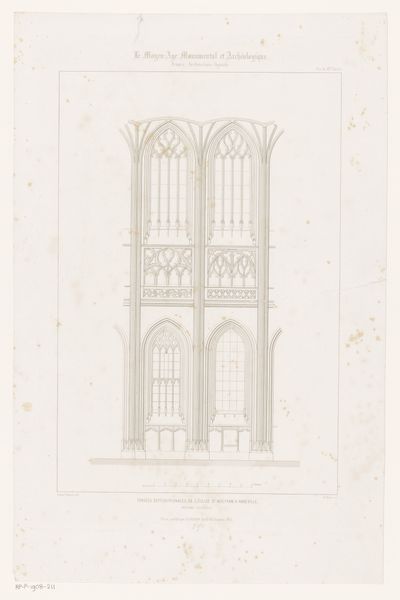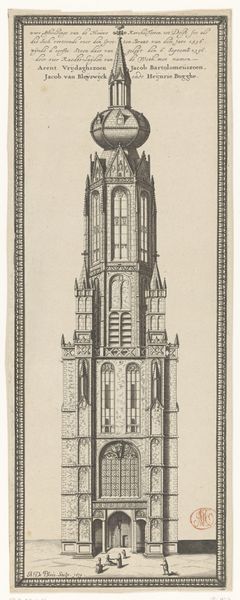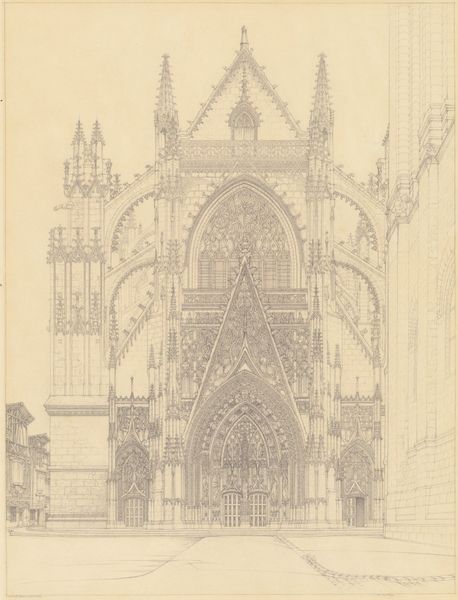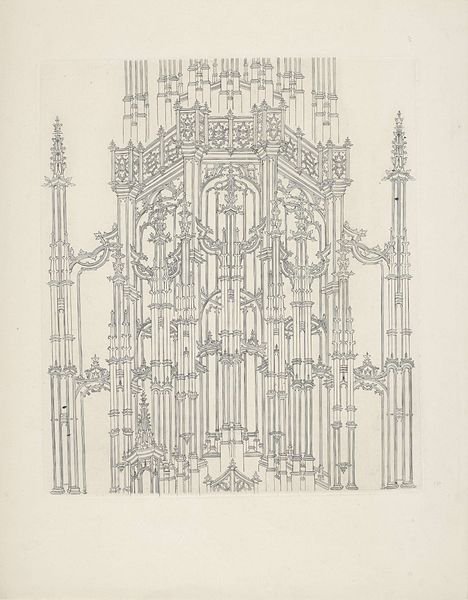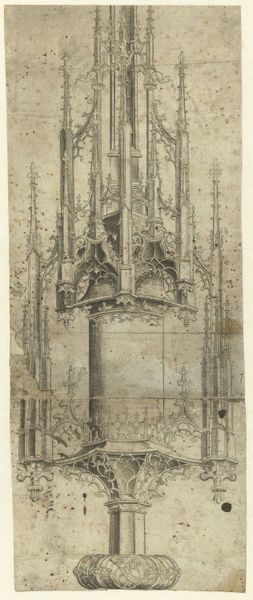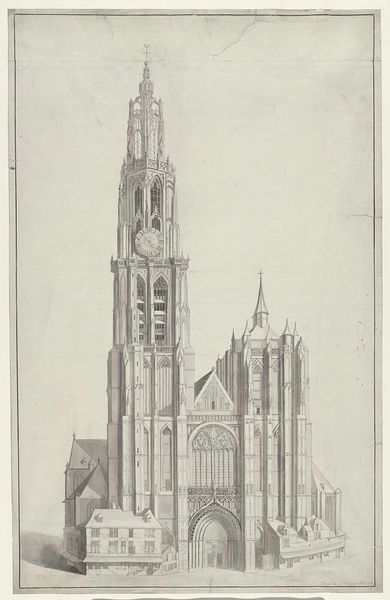
Ontwerp voor de toren van de Sint-Romboutskathedraal te Mechelen 1649
0:00
0:00
#
pencil drawn
#
amateur sketch
#
light pencil work
#
shading to add clarity
#
pencil sketch
#
old engraving style
#
incomplete sketchy
#
hand drawn type
#
pen-ink sketch
#
pen work
Dimensions: height 745 mm, width 160 mm
Copyright: Rijks Museum: Open Domain
Curator: I'm struck by the drawing’s aspiring, almost unsettling height, like a gothic finger pointing to the heavens. Editor: This is Wenceslaus Hollar’s "Ontwerp voor de toren van de Sint-Romboutskathedraal te Mechelen," dating from 1649. Currently held in the Rijksmuseum, it presents an intricate vision in ink. What interests me is the sheer labor involved. This wasn't a quick sketch, but a meticulously rendered plan, an attempt to visualize and potentially influence monumental construction. Curator: And how it visually communicates ambition, really – the symbolic climb towards divine connection. Each level of gothic detailing seems to add to this symbolic accumulation of piety and civic pride. Does it tap into a shared cultural longing, do you think? Editor: Absolutely. These gothic structures functioned as significant employers in the late Medieval and early modern era. The production of materials—stone, glass, metals—and the organization of skilled labor forces involving masons, glaziers, and other specialized crafts workers sustained local economies, reflecting a society deeply invested in material expression of religious and social values. Curator: I wonder about the missing top, that incomplete finish… Does it point towards unfulfilled dreams or perhaps the shifting fortunes of religious institutions in that era? Is there some inherent meaning embedded in this imperfection? Editor: Interesting you mention that – I see a reflection of process. It showcases an architect's work as both a visual concept and a material endeavor, subject to social and economic realities. Its incompleteness provides a unique opportunity to study the intentions and potential realization. Curator: So true. It feels less like a finished piece and more like a historical artifact capable of triggering endless questions. It has this remarkable aura of historical yearning, doesn't it? Editor: Indeed. Examining these artistic decisions gives us some visibility into cultural production practices and related forms of capital—economic, social, or symbolic—during a particular period, and the lasting legacy of these traditions.
Comments
No comments
Be the first to comment and join the conversation on the ultimate creative platform.

